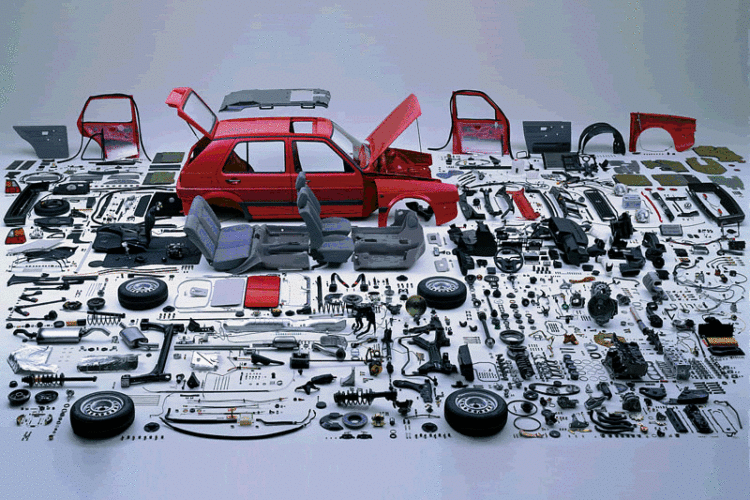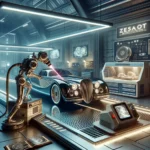
I. Introduction to 3D Printing for Vintage Car Parts
II. Benefits of 3D Printing for Vintage Car Parts
III. Challenges of 3D Printing for Vintage Car Parts
IV. Tips for Successfully 3D Printing Vintage Car Parts
Are you a vintage car enthusiast looking to restore your classic beauty to its former glory? Have you struggled to find rare and hard-to-find parts for your beloved vehicle? Well, fear not, because 3D printing may just be the solution you’ve been looking for!
3D printing technology has revolutionized the way we create and manufacture objects, and vintage car parts are no exception. With the ability to replicate intricate designs and produce customized components, 3D printing offers a promising alternative for enthusiasts seeking to restore their vintage vehicles.
Imagine being able to easily reproduce a rare tail light, a missing emblem, or a unique gear knob for your classic car with just a few clicks. With 3D printing, the possibilities are endless, and the potential for preserving the beauty and authenticity of vintage cars is truly exciting.
In this piece, we will explore the world of 3D printing for vintage car parts, highlighting the benefits, challenges, and tips for successfully utilizing this innovative technology in your restoration projects.
Benefits of 3D Printing for Vintage Car Parts
Are you a vintage car enthusiast looking for a way to restore your beloved classic vehicle to its former glory? Look no further than 3D printing! This innovative technology offers a plethora of benefits when it comes to creating replacement parts for vintage cars. Let’s dive in and explore why 3D printing is a game-changer for vintage car restoration.
- Customization: One of the biggest advantages of 3D printing is the ability to customize parts to fit your specific needs. Whether you’re looking to replicate a rare part or modify an existing design, 3D printing allows for unparalleled flexibility in creating bespoke solutions for your vintage car.
- Cost-Efficiency: Traditional manufacturing methods for vintage car parts can be costly and time-consuming. With 3D printing, you can eliminate the need for expensive tooling and reduce production costs significantly. This cost-effective approach makes restoring vintage cars more accessible to enthusiasts on a budget.
- Rapid Prototyping: 3D printing enables rapid prototyping, allowing you to quickly iterate and test designs before final production. This iterative process not only speeds up the development cycle but also ensures that the final parts meet your exact specifications, saving time and resources in the long run.
- Complex Geometries: Vintage cars often feature intricate and complex parts that can be challenging to reproduce using traditional methods. 3D printing excels at creating intricate geometries and intricate details, making it the perfect solution for replicating even the most intricate vintage car parts with precision and accuracy.
- Sustainability: By utilizing 3D printing for vintage car parts, you can reduce waste and minimize environmental impact. Additive manufacturing produces minimal material waste compared to traditional subtractive methods, making it a more sustainable option for vintage car restoration projects.
As you can see, 3D printing offers a wide range of benefits that make it an ideal choice for creating vintage car parts. Whether you’re looking to restore a classic vehicle to its former glory or customize it to suit your unique style, 3D printing provides a cost-effective, efficient, and sustainable solution that meets the demands of vintage car enthusiasts. So why wait? Embrace the future of vintage car restoration with 3D printing and bring your classic ride back to life in style!
Challenges of 3D Printing for Vintage Car Parts
While 3D printing technology has revolutionized the way we approach manufacturing, there are still some challenges when it comes to using this technology for vintage car parts. Here are some common hurdles you might encounter:
- Material Selection: One of the key challenges in 3D printing vintage car parts is selecting the right material. Not all materials are suitable for printing parts that need to withstand the wear and tear of a vintage car. It’s important to choose a material that is durable, heat-resistant, and compatible with the specific requirements of the part you are trying to replicate.
- Accuracy and Precision: Another challenge is ensuring that the 3D printed part is accurate and precise enough to fit perfectly in the vintage car. It’s crucial to have precise measurements and detailed design specifications to avoid any misalignments or fitting issues.
- Post-Processing: Once the part is printed, there is usually some post-processing required to achieve the desired finish and functionality. This can include sanding, painting, or additional machining to ensure that the part meets the necessary standards. It’s essential to factor in the time and resources required for post-processing when planning your 3D printing project.
- Cost: While 3D printing can be a cost-effective solution for producing custom vintage car parts, there are still costs associated with materials, equipment, and labor. It’s important to consider the overall cost of the project and weigh it against the benefits of using 3D printing technology.
Despite these challenges, with careful planning, attention to detail, and the right expertise, 3D printing can be a valuable tool for recreating vintage car parts. By understanding and addressing these challenges, you can successfully leverage 3D printing technology to preserve and restore classic cars with precision and accuracy.
So you’ve decided to venture into the world of 3D printing vintage car parts – congratulations! This exciting technology has the potential to revolutionize the way we approach restoration projects for classic vehicles. However, as with any new endeavor, there are certain tips and tricks to keep in mind to ensure your 3D printing process goes smoothly and successfully. Here are some expert tips to help you along the way:
1. Choose the Right Material
When it comes to 3D printing vintage car parts, the material you choose can make all the difference in the final product. Consider factors such as durability, heat resistance, and appearance when selecting the material for your project. ABS and PETG are popular choices for automotive parts due to their strength and resilience.
2. Fine-Tune Your Design
Before you hit ‘print,’ take the time to fine-tune your design to ensure it will fit and function properly within your vintage vehicle. Use CAD software to make any necessary adjustments and test the design virtually before committing to printing. This extra step can save you time and resources in the long run.
3. Calibrate Your Printer
Proper calibration is essential for achieving high-quality prints, especially when it comes to intricate vintage car parts. Take the time to calibrate your printer’s settings, including the nozzle temperature, print speed, and layer height, to optimize the printing process and ensure accurate results.
4. Consider Post-Processing Techniques
Once your part has been printed, don’t forget about post-processing techniques to enhance its appearance and functionality. Sanding, painting, and smoothing techniques can help achieve a professional finish that seamlessly integrates with the rest of your vintage vehicle.
5. Test and Iterate
Before installing your 3D printed vintage car part, be sure to test it thoroughly to ensure it meets your expectations in terms of fit and performance. If adjustments are needed, don’t be afraid to iterate on your design and reprint the part until you achieve the desired results.
6. Seek Expert Advice
When in doubt, don’t hesitate to seek advice from experienced 3D printing enthusiasts or automotive restoration experts. They can offer valuable insights and guidance to help you navigate any challenges you may encounter along the way.
By following these expert tips, you’ll be well on your way to successfully 3D printing vintage car parts and breathing new life into your classic vehicle. Remember to approach the process with patience and creativity, and don’t be afraid to experiment and learn from each printing experience. Happy printing!










Comments